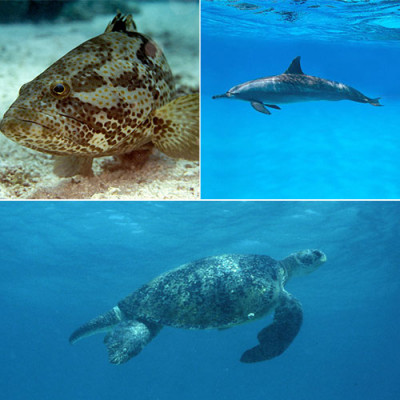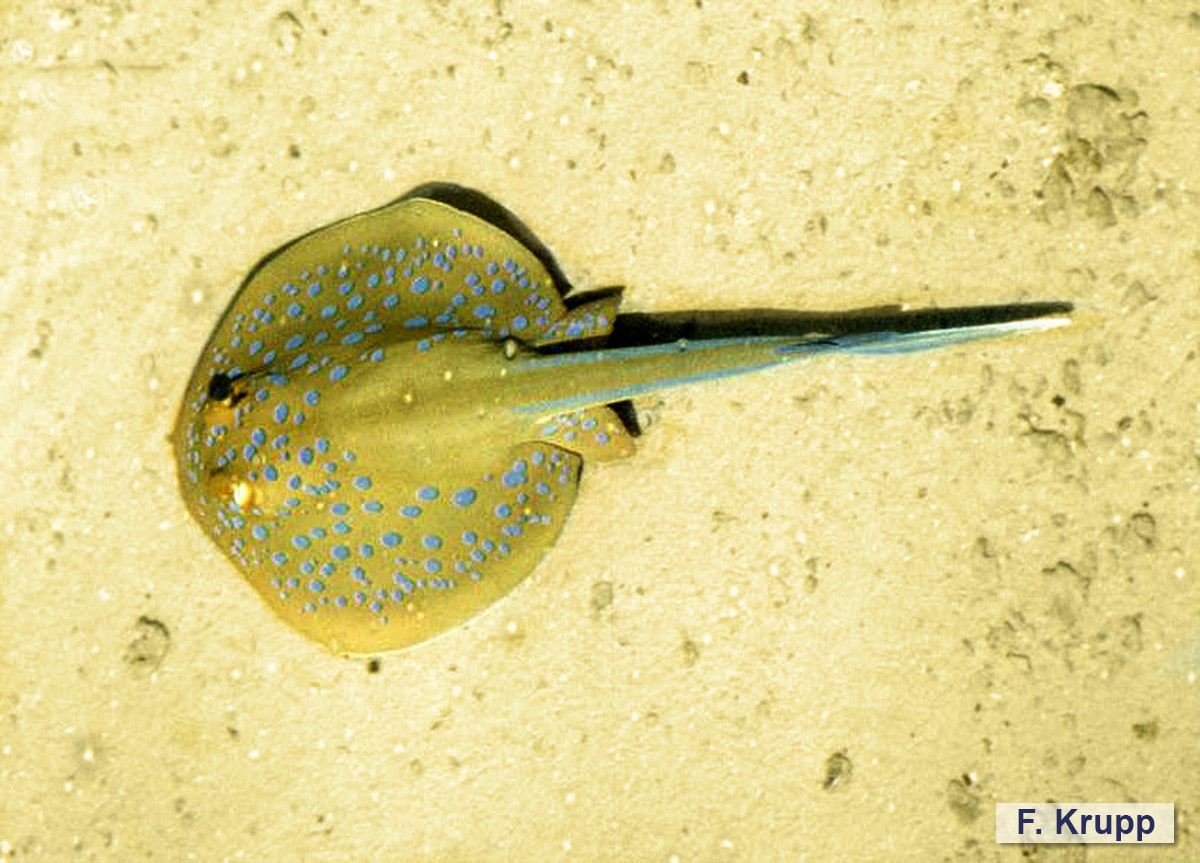Name: Ribbontail Stingray
Local name: Lukhma
Scientific name: Taeniura lymma
Classification: Class: cartilaginous fishes; Order: stingrays; Family: whiptail stingrays (Dasyatidae)
Synonym: Trygon ornatus
Size: It reaches at least 70 cm total length.
Habitat:
The Ribbontail Stingray occurs around coral areas and migrates in groups to shallow sandy patches during rising tides, but it is rarely seen buried under the sand. It feeds on mollusks, worms, shrimps, and crabs. It is ovoviviparous, producing young by means of eggs which hatch inside the parent’s body. There are up to seven pups in a litter. The tail spines may inflict painful wounds.
Distribution:
It occurs in the tropical Indo-West Pacific from the Red Sea and East Africa to the Solomon Islands, north to southern Japan, and south to northern Australia. It is rare in the Arabian Gulf.
Conservation status:
According to the IUCN Red List, it is Near Threatened (NT). In the Arabian Gulf, it is of no interest to fisheries. Small specimens are popular among aquarists.
Description:
The disc is ovate and wider than long. The snout is rounded to slightly wedge-shaped. The tail is depressed and tapering with one or two venomous spines. It is easily recognized by its color pattern with a yellowish brown dorsal surface and numerous well-spaced, round to oval, bright blue spots of variable size; the tail has a blue stripe on each side.








